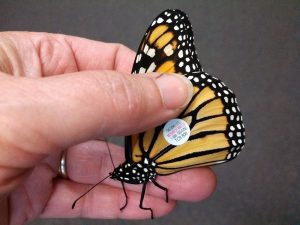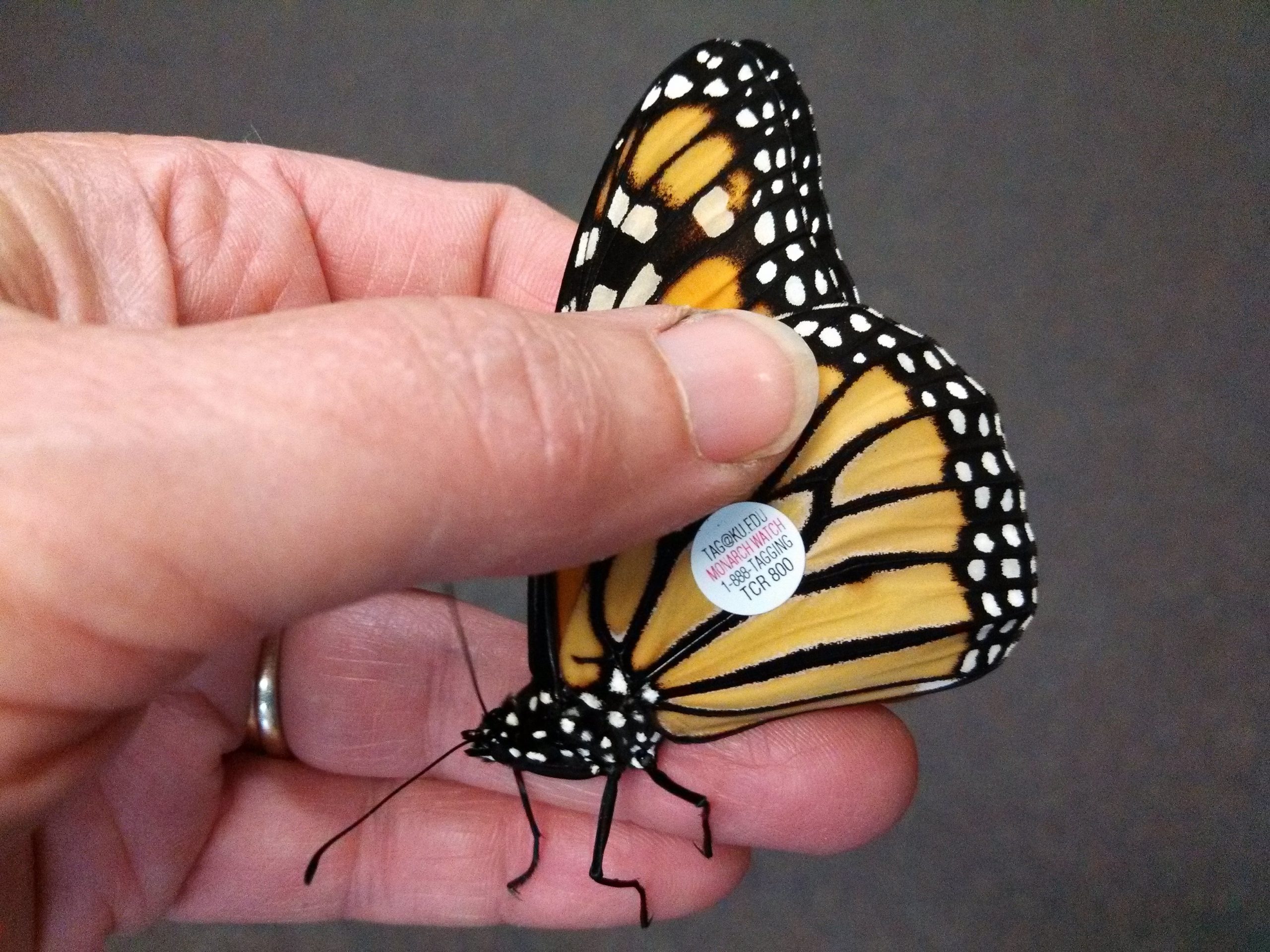by Diane Hall

As I perused the list of sessions for the Virtual TMN Annual Conference, I was drawn like a monarch to milkweed when I saw the “Monarch Waystations for Texas” session by Carol Clark, Conservation Specialist for Monarch Watch and fellow Texas Master Naturalist. Having tagged monarchs in Iowa since 1999 and traveled to Mexico to see the overwintering population in 2009, I was curious to hear more about monarchs in Texas.
The ENTIRE population of monarchs east of the Rocky Mountains depends on finding milkweeds when they migrate north through Texas in the spring. That places a big responsibility on Texas residents (Winter Texans included)! Since the monarch is the Texas state insect, we can hope that many of us are willing to get behind this iconic pollinator. Carol Clark shared, “While monarchs won’t disappear, scientists are worried that the migration may end.”
So what is a monarch waystation? This valuable addition to any yard or public space is a spot which provides host plants, nectar plants, and shelter for monarch butterflies. If you have at least 100 square feet of sunny yard, you’re on the right path for making a difference for monarch butterflies. “All this effort just for monarchs? No, other pollinators benefit too!” exclaims Clark.
Milkweed is essential as a host plant or larval food source in your monarch waystation. This is the only type of plant the monarch caterpillars can eat. Look for and plant milkweeds native to your area. Clark referenced Identification of Milkweeds in Texas by the Ladybird Johnson Wildflower Center and Texas Parks and Wildlife. Zizotes (Asclepias oentheroides) is a common milkweed in Deep South Texas.
Nectar plants for your monarch waystation will attract many species of butterflies, not just monarchs. Clark suggested goldenrod (Solidago spp.), blazingstar (Liatris spp.), blue mistflower (Chromoleana odorata), Indian paintbrush (Castilleja indivisa), Texas vervain (Verbena halei), and sunflower species.
Once you’ve attracted monarchs to your waystation, why not become a citizen scientist? There are many opportunities through Journey North, Monarch Larvae Monitoring Project, Integrated Monarch Monitoring Project, iNaturalist, and Monarch Watch. It was through Monarch Watch that I ordered tags to place on wild caught or hand reared monarchs in the fall to aid in the study of monarch migration. It was so much fun catching and tagging monarchs with my children, students, friends, and neighbors!
Whether you’re helping monarchs or other pollinators, Clark shared several steps to help monarchs:
- Reduce or eliminate personal pesticide use
- Refrain from mowing weeds in spring (until after May in Texas)
- Plant “real” nectar plants for spring and fall migration (avoid hybrid plants and double/triple petals)
- Plant native milkweeds
- Tell others that monarchs need milkweeds
- Create and register your monarch waystation and erect an official Monarch Watch waystation sign
Are you ready to take monarchs under your wing?
For more information:
https://tpwd.texas.gov/huntwild/wild/wildlife_diversity/texas_nature_trackers/monarch/


Leave a Reply